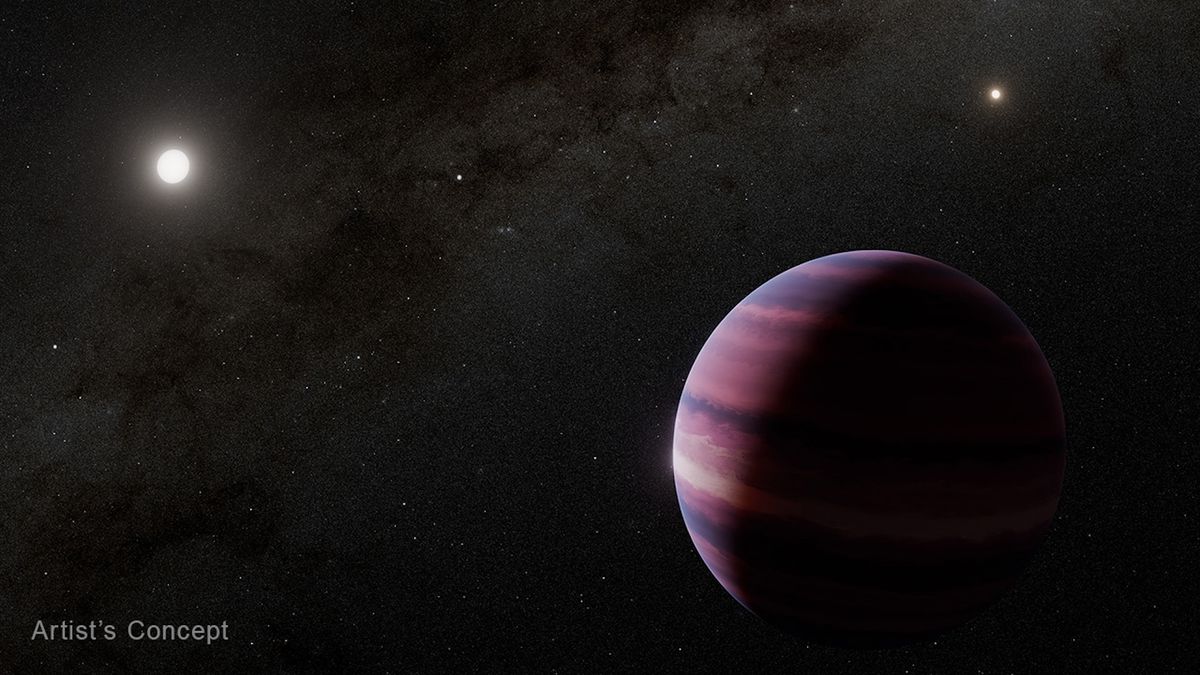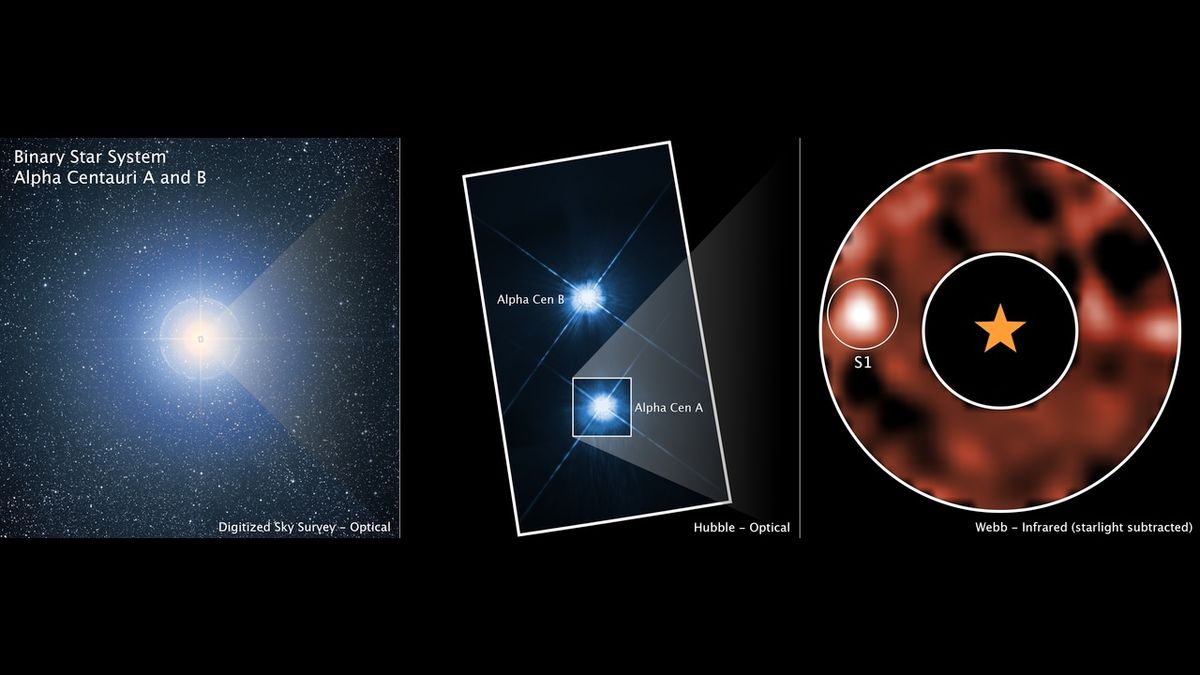🔭 A habitable moon could be located very close to us
Follow us on Google News (click on ☆)
Initial observations by the James Webb Space Telescope revealed the potential presence of a Saturn-sized planet, named S1, around Alpha Centauri A. This star is part of the closest stellar system to ours, located about 4.25 light-years away. However, the planet mysteriously disappeared from subsequent observations, leaving scientists puzzled (see our article on this topic).

Artist's interpretation of the gas giant S1 orbiting Alpha Centauri A.
Credit: NASA, ESA, CSA, STScI, Robert L. Hurt (Caltech/IPAC)
Researchers speculate that S1's orbit might currently make its detection more difficult. They predict the planet could become visible again between 2026 and 2027. This discovery, if confirmed, would mark a significant breakthrough in the search for exoplanets.
The idea of a habitable moon around S1 recalls Pandora, the fictional moon from 'Avatar'. In our solar system, gas giants like Jupiter and Saturn have dozens of moons, some of which may harbor subsurface oceans. This strengthens the hypothesis that S1 could also have moons.
The size of a potential moon around S1 is a key factor in determining its habitability. A Mars-sized moon could have an atmosphere and oceans, while a smaller one would have fewer chances. However, detecting these exomoons remains a major technological challenge.

The Alpha Centauri star system as seen by three different observatories.
Credit: NASA, ESA, CSA, Aniket Sanghi (Caltech), Chas Beichman (NExScI, NASA/JPL-Caltech), Dimitri Mawet (Caltech)
What is a habitable zone?
A star's habitable zone is the region around it where conditions could allow for liquid water on a planet's surface. This zone depends on the star's size and temperature. Too close, and water evaporates; too far, and it freezes.
In the case of Alpha Centauri A, a star similar to the Sun, the habitable zone is located at a distance where a planet would receive a comparable amount of heat to what Earth receives from the Sun. It is in this zone that planet S1 was detected.
The presence of liquid water is considered an essential ingredient for life as we know it. This is why the search for planets in habitable zones is a priority for astronomers.
However, being in the habitable zone does not guarantee that a planet or moon is habitable. Other factors, such as a stable atmosphere and geological activity, also play a crucial role.
How are exoplanets detected?
Exoplanets are planets located outside our solar system. Their detection is complicated due to their distance and the faint light they reflect. Several methods are used, including the transit method and the radial velocity method.
The transit method involves observing the dimming of a star's brightness when a planet passes in front of it. This method allowed the initial detection of S1 by the James Webb Telescope.
The radial velocity method, on the other hand, measures the star's oscillations caused by the gravitational pull of an orbiting planet. These oscillations induce slight changes in the star's light, which can be detected from Earth.
These complementary methods allow astronomers to confirm the presence of exoplanets and estimate their size, mass, and distance from their star.